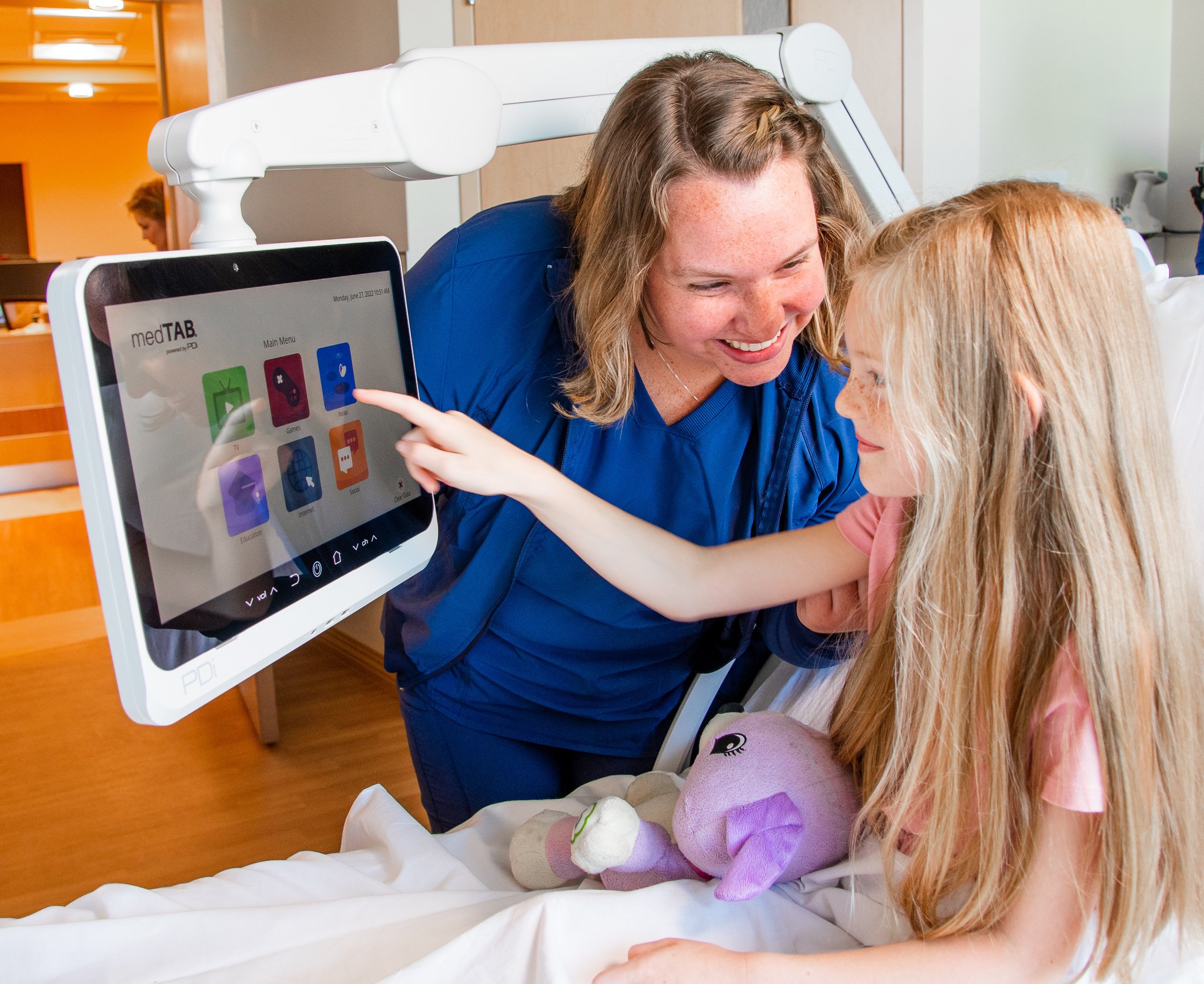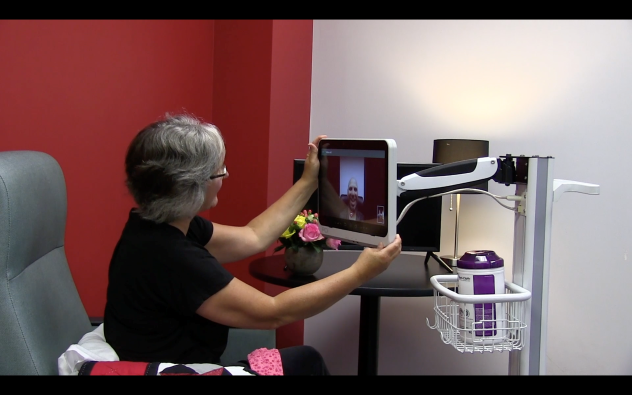Safely Engage Patients with Communication and Entertainment Carts
Healthcare providers know how important a safe, great experience is for patients and their overall satisfaction. Providers are often looking for new...
3 min read
Kayleigh DeLaet
:
March 1, 2023

One of the biggest challenges facing healthcare providers today is keeping patients engaged in their healthcare. After all, without proper follow-through on the patient’s end, the condition being treated has the potential to resurface.
When patients leave the hospital, they’re responsible for handling their care and taking the steps toward a successful recovery. For the best results, patients and providers must work together to ensure patients are following their care plans and making healthy lifestyle choices.
Keep reading to discover the importance of patient engagement, the barriers to achieving it, and the benefits of patient engagement software.
Patient engagement is defined as the desire and capability of patients to actively participate in their healthcare. The goal is to encourage patients and providers to work together to determine the best strategy, rather than providers making decisions on behalf of patients.
Evidence suggests that patients who share input experience better health outcomes. Additionally, providers experience improved safety, financial performance, CAHPS scores, and employee satisfaction.
On the other hand, when patients are disengaged in their treatment, there are several consequences. Facilities waste resources due to higher call volume, repetitive patient education efforts, increased diagnostic tests, and a greater need for referrals.
While all providers strive for high patient engagement, it’s not always easy to achieve. It can be challenging to get patients involved in their health.
Below, we discuss the barriers that impact patient engagement.
.jpg?width=1024&height=512&name=Road%20Block%20(1).jpg)
Poor Health Literacy
Fundamental to maintaining good health is the ability of patients to comprehend medical information and make educated health decisions. Yet, a shocking 88% of US adults have limited health literacy.
Health literacy greatly impacts a patient’s involvement in their healthcare. Those with limited knowledge about health matters show less willingness to follow treatment instructions and poorer self-care. Additionally, they’re more likely to be admitted for extended hospital stays and receive emergency treatment.
Rising Healthcare Costs
Another contributor to low patient engagement is the steep price of healthcare services. In 2021, US healthcare spending reached an unmatched $4.3 trillion, averaging about $12,900 per person.
Cost plays a significant role in healthcare participation. The strain of out-of-pocket expenses deters many patients from seeking medical care. Even patients who do seek treatment may skip doctor’s appointments, stop filling prescriptions, or avoid lab work to save money.
Communication Difficulties
While effective communication is important for all organizations, it’s a top priority in healthcare. Communication errors can result in dire consequences for patients. A study by the Joint Commission found that 80% of serious medical errors can be attributed to poor communication.
It’s most common for communication failures to occur during shift changes when inaccurate information is given to the next caregiver. However, communication errors can be present at any stage of the healthcare process. This prevents patients from clearly understanding their health status and puts their safety at risk.

Luckily, technology has come a long way in the last several years and can help alleviate challenges surrounding patient engagement.
Patient engagement software delivers applications that keep patients informed, entertained, and self-sufficient. These tools empower patients to take control of their health and deliver a meaningful healthcare experience.
Let’s delve into the three biggest advantages of patient engagement software.
Educational Resources
One of the biggest perks of patient engagement software is access to educational resources. Some platforms, like PDi's GENiO software, give providers the option to display their own educational content. If providers don't have their own content, they can also utilize free resources from healthcare organizations like the CDC.
Educational videos improve health literacy by breaking complex concepts down into digestible segments. Through the use of simplified language and visuals, educational videos make health conditions seem more manageable. This encourages patients to follow their care plans and make healthy choices.
Patient Portal Access
Another benefit of patient engagement software is patient portal access. Patient portals let patients view all of their health information, like lab results and drug allergies, in one place. They can also perform functions including refill requests, appointment scheduling, and provider messaging.
By giving patients the tools to take ownership of their health, they become more self-sufficient in managing their care. It also cuts down on the amount of time staff spends performing administrative tasks, which improves clinical workflows.
Entertainment Options
Lastly, another key advantage of patient engagement software is the ability to provide patients with a wide range of entertainment options. Being confined to a bed during long hours of treatment can be a lonely and isolating experience. This is why it’s valuable to offer patients activities to keep them distracted and entertained.
Patient engagement software lets patients watch TV, stream music, play games, video chat with friends, and more. These activities help patients take their minds off of the pain, which speeds up the healing process.
Patient engagement is crucial for ensuring positive outcomes for both patients and providers. Although achieving patient engagement can be tricky, software makes it easier by providing educational resources, patient portal access, and entertainment options.
As technology continues to advance, healthcare providers must utilize its capabilities to deliver a more meaningful patient experience.

Healthcare providers know how important a safe, great experience is for patients and their overall satisfaction. Providers are often looking for new...

Do you want your patients to have the best experience possible at your unique healthcare facility or hospital space? Choose interactive patient TV...

Data is invaluable in healthcare, providing vital information for decision-making. Patient engagement metrics measure how well a facility connects...